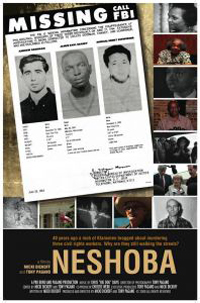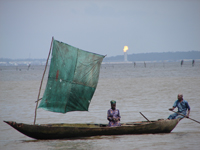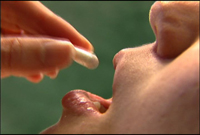“NESHOBA: The Price of Freedom” tells the story of a Mississippi town still divided about the meaning of justice, 40 years after the murders of civil rights workers James Chaney, Andrew Goodman and Michael Schwerner. In the summer of 1964, these three young men, two whites from New York and a black from Mississippi — went to Philadelphia, a small town in the heart of Neshoba County, to register black voters and investigate a church burning. When their bodies were found 44 days later buried beneath an earthen dam, many people rationalized the men came looking for trouble and got what they deserved. For more than forty years, Mississippi refused to prosecute any of the Klansmen directly responsible for the murders, even though they bragged openly about what they did. While the killers continued to live and prosper, most townspeople remained silent, as if the murders never happened.
In 2004, a multi-racial coalition of Neshoba County citizens got together for the first time in 40 years to erase the stain from their town by publicly pressuring the State to bring murder charges against the ”Mississippi Burning” murderers. Meeting with opposition and even hostility from some of their neighbors, members of the Philadelphia Coalition were resolute in their call for justice, healing and racial reconciliation. Finally, on January 6, 2005, the State of Mississippi indicted the mastermind of the killings, Edgar Ray Killen, an 80-year-old Baptist preacher and notorious racist.
The filmmakers gained unprecedented access to Killen, following him for five months, from shortly after his indictment through his trial. For the first time ever, the film captures the outspoken views of a Klan member charged with a civil rights murder and takes viewers on a journey into the mindset of a man who, to this day, feels the murders of two Jews and an African-American were justified as “self-defense” of a way of life. Through exclusive, first-time interviews with Killen, intimate interviews with the families of the victims, and candid interviews with black and white Neshoba County citizens with diverse points of view, the film exposes the social and political forces that perpetuated state-sanctioned terrorism and created an atmosphere of hate and fear, allowing murderers to walk free.
NESHOBA takes an unflinching look at ordinary citizens struggling to find peace with their town’s violent, racist past. By interweaving new and archival footage, the 87-minute documentary paints a picture of Neshoba County from 1964 to 2005, using the Chaney, Goodman and Schwerner case as a barometer of what has changed for both blacks and whites since the murders. The film examines the complicity of local, state and federal government who deliberately fanned the flames of hate and violence. It questions why the State took four decades to seek justice, and why only one person was singled out when at least eight others who participated in the murders are still alive. Finally, the film explores whether the prosecution of one unrepentant Klansman constitutes justice and whether healing and reconciliation are possible without telling the unvarnished truth.




